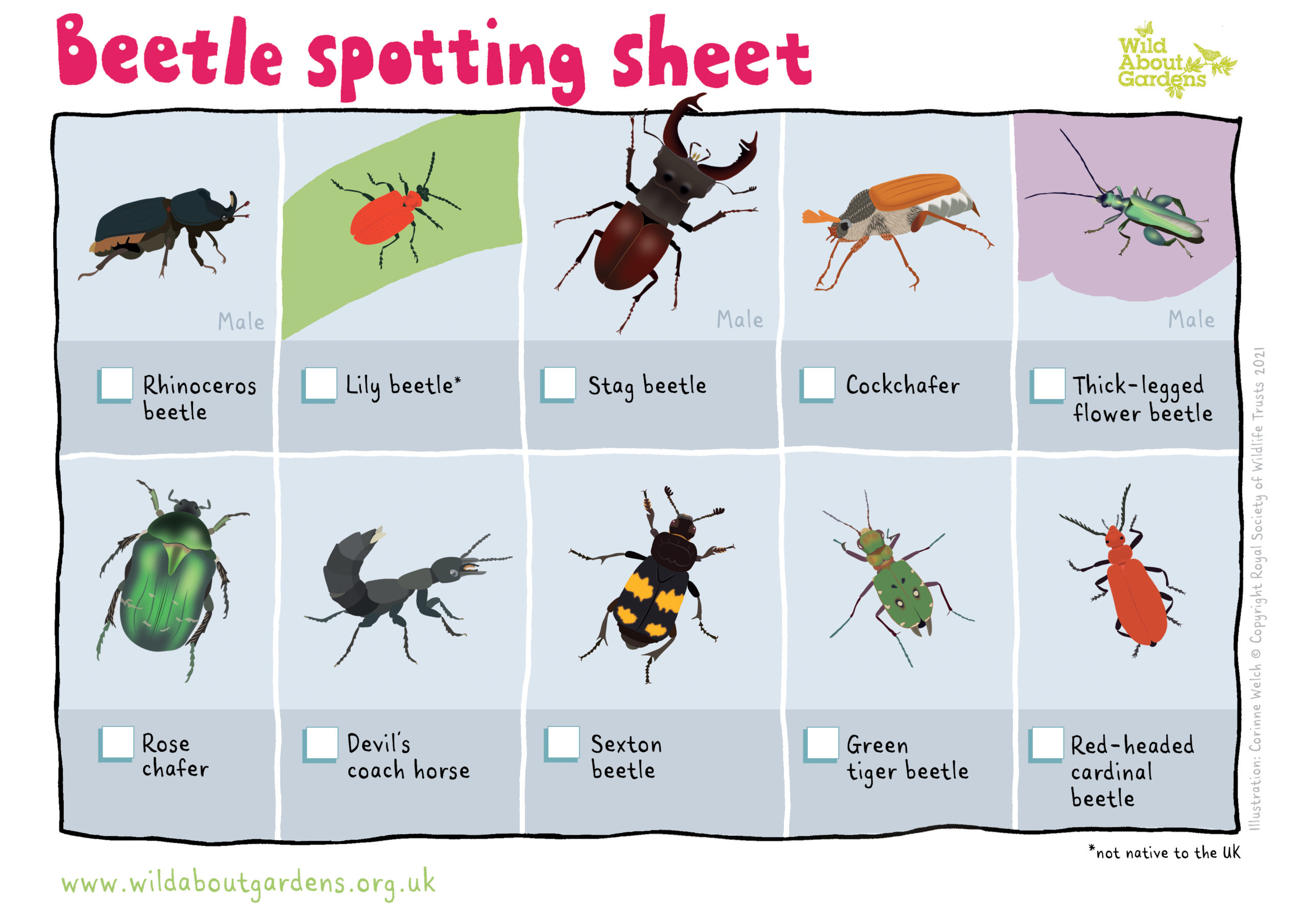The Wildlife Trusts and RHS ask gardeners to help beetles after topsy turvy weather this spring
Early June is considered by some entomologists to be ‘peak beetle’ season across the UK, when many species are out in force looking for a mate. Stag beetles are a classic example, with males locking their jaws and wrestling each other over mating sites.
However, conservationists fear that topsy turvy weather in the spring – including an exceptionally cold April followed by a deluge of rain in May – could have had a detrimental impact on beetle populations this year.
In response, the 2021 Wild About Gardens Bring Back Our Beetles campaign is calling on gardeners to support beetles by:
- Recording the different kinds found in their garden using Nature counts– it gives everyone a way to easily contribute to the larger environmental picture and record their wildlife sightings. Click here to find out more.
- Creating beetle banks in their garden, and planting species such as hawthorn, dogwood, and hogweed, and herbs including angelica, fennel, and chervil.

Entomologist, Ben Keywood, of Sheffield Wildlife Trust, says:
“There is growing evidence that the cold spring has affected this year’s beetles. Ladybird numbers, in particular, seem very low, which is probably due to the cold weather in April wiping out their prey – especially aphids.
“Many insects will have been flooded-out or washed-off their foodplants in May’s torrential rain. Wet weather also increases the chances of fungal infection which can be problematic for beetles, as well as caterpillars of butterflies and moths. Insects are hugely adaptable, so let’s hope populations can recover with the warmer weather this month.”
Helen Bostock, senior horticultural advisor at the RHS, says:
“At last the warmer weather has meant gardeners can get out into their gardens. Plants are growing at speed and wildlife is really starting to get active too. The wet May means you’re more likely to see ‘Maybugs’ or cockchafers in June instead this year! Anyone who has been leaving a patch of grass to grow long can now expect to see weevils and beetles on flowering daisies and buttercups and, if they’re really lucky, a glow worm or two among the grass. There’s still time to stop mowing a section of lawn for the summer or benefit your local beetle population by making a beetle bank.”
Prof. Brian Eversham, entomologist and chief executive of Bedfordshire, Cambridgeshire and Northamptonshire Wildlife Trust, says:
“The amount of rain we had in May will certainly have affected a variety of insects – including beetles. Because flower-visiting beetles don’t generally feed on deep ‘bee’ flowers – where nectar is sheltered by the tubular flower structure – their favoured plants, such daisies and hogweed, are prone to being literally washed out by rain.
“By recording what’s found in your garden – and creating more diverse habitats – gardeners can play a central role in helping to understand how beetles and other insects are doing this year.”
There are more than 4,000 beetle species across the UK, but many are really struggling due to habitat loss, the use of pesticides and fertilisers, and unpredictable weather caused by climate change.
People are being encouraged to look out for:
- Soldier beetles – Medium-sized, narrow beetles that feed on aphids and are commonly found on open structured flowers like daises and hogweed. There are around 40 species of soldier beetle in the UK, with various colour combinations of black, red, and orange.
- Click beetles – Also known as snapping beetles and skipjacks, click beetles have an unusual ability to jump at impressive speed. By arching their backs, they create tension in a special hinge on their thorax, which they can release suddenly, causing them to flip out of the way of danger. There are 65 species of click beetles in the UK and, with many of them looking very similar, it can be quite a challenge to tell them apart!
- Longhorn beetles – Longhorn beetles get their name because of their long antennae. Most species are associated with dead wood, where the larvae develop, though several longhorns use the stems of herbaceous plants. Well-known longhorns include musk beetles – noted for their musky secretion, and wasp beetles, which favour dead willow and birch. Not only are wasp beetles coloured like wasps, but they mimic their movements too.

Pledge your patch for beetles and download a Bring back our beetles guide here.
